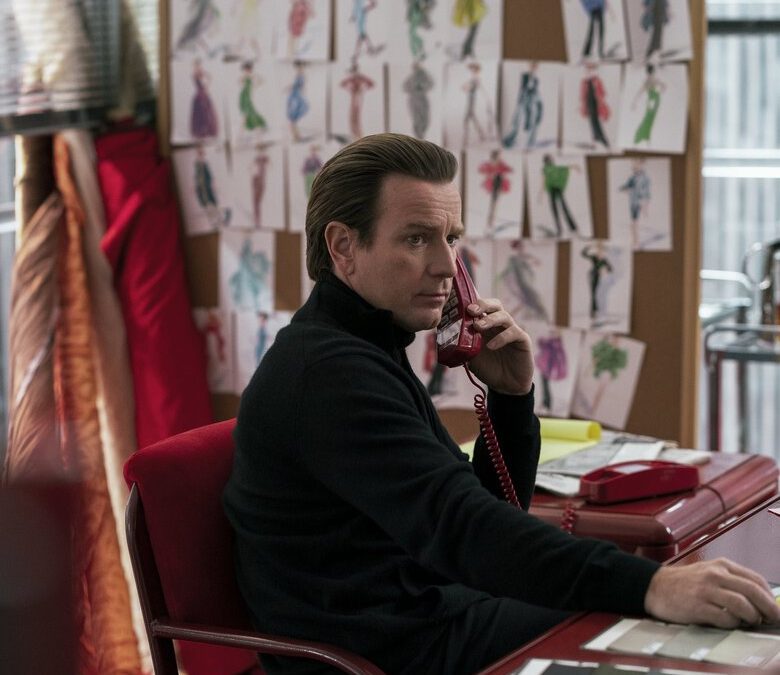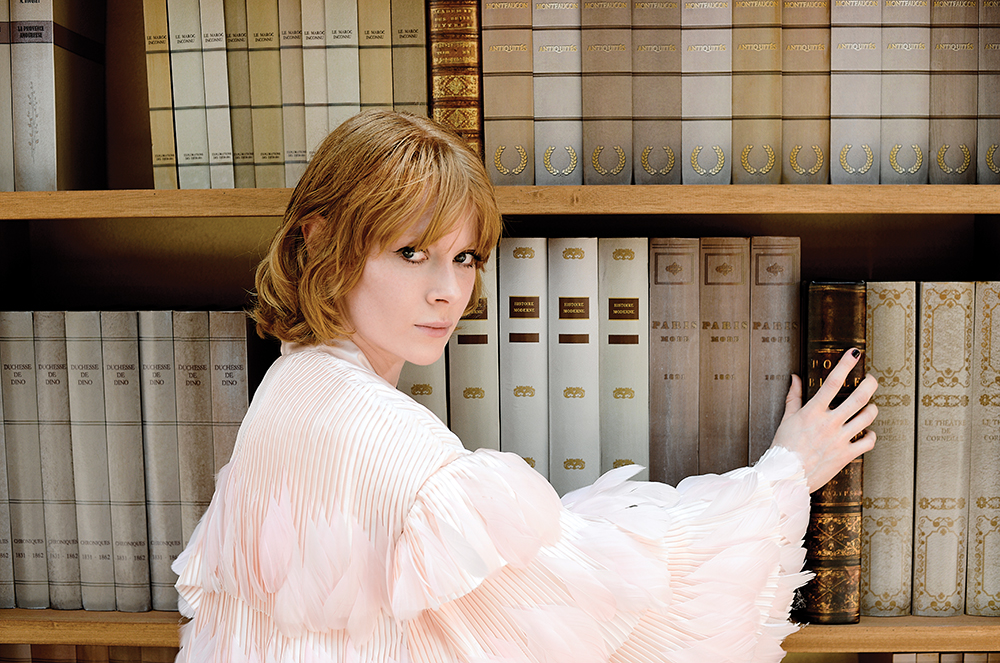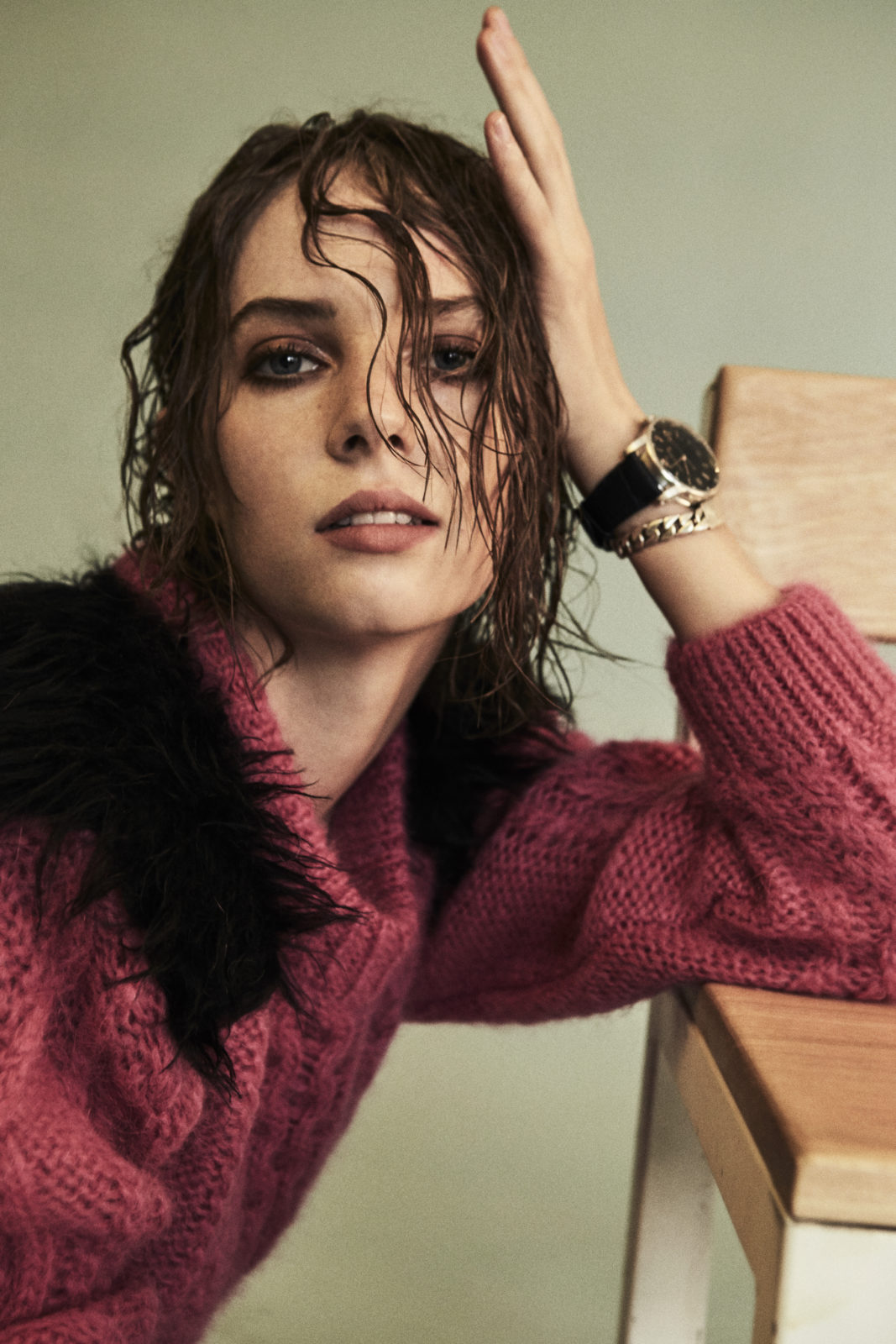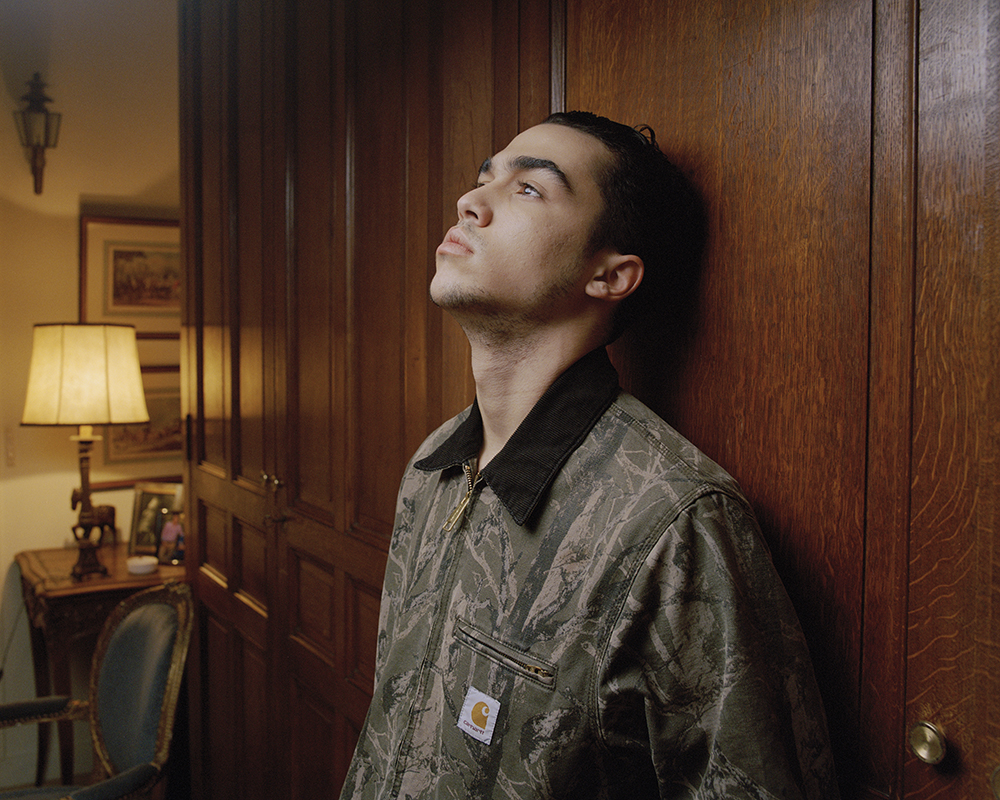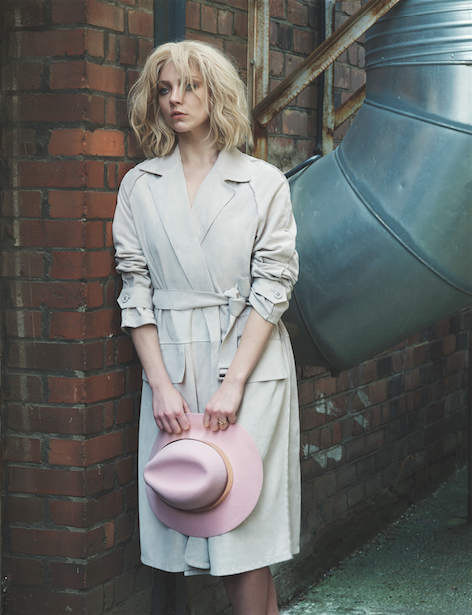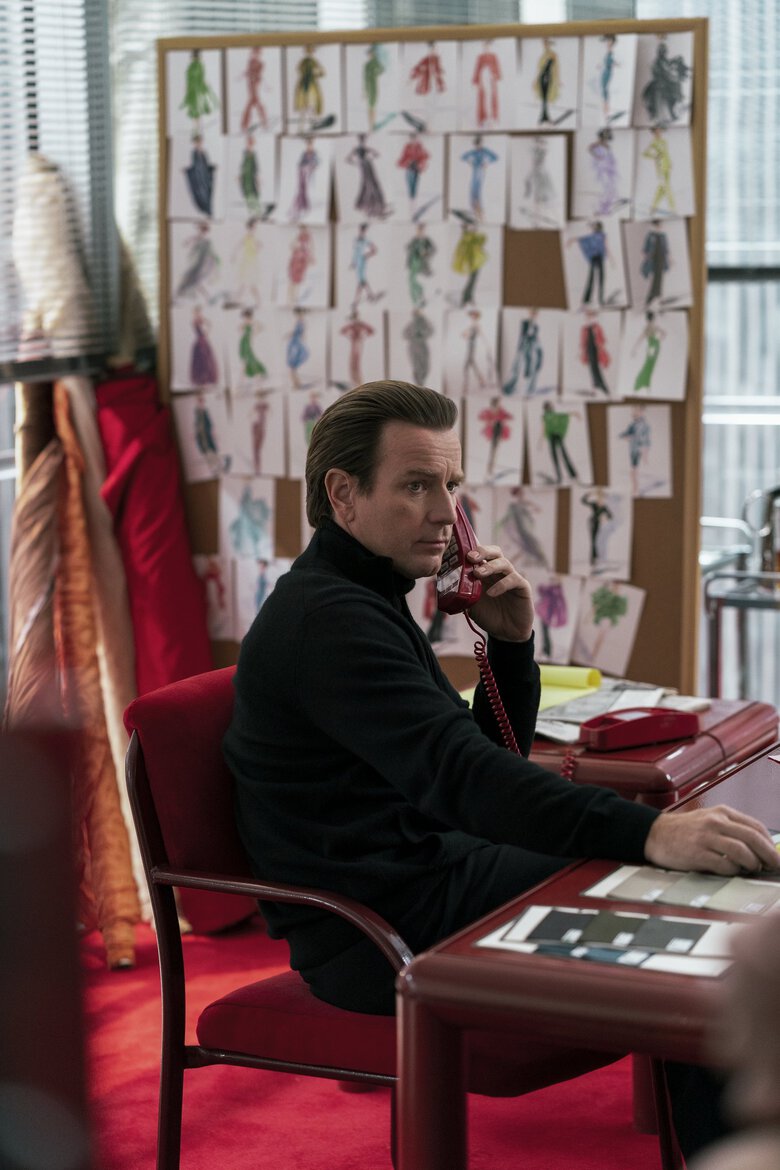
A MEETING WITH NETFLIX’S HALSTON CREW
By Crash redaction
The limited series HALSTON follows the legendary fashion designer (Ewan McGregor), as he leverages his single, invented name into a worldwide fashion empire that’s synonymous with luxury, sex, status and fame, literally defining the era he lives in, 1970’s and ‘80’s New York — until a hostile takeover forces him to battle for control of his most precious asset… the name Halston itself. The series is Executive Produced by Ryan Murphy, Ian Brennan, Alexis Martin Woodall, Daniel Minahan, Ewan McGregor, Eric Kovtun, Sharr White, and Christine Vachon and Pamela Koffler of Killer Films. Minahan also serves as the series director.
MAKING HALSTON: IN CONVERSATION WITH DANIEL MINAHAN The Emmy Award-winning executive producer and director of HALSTON talks about his 20-year journey making this show, Ewan McGregor’s incredible commitment to the role, and why this story is more timely than ever.
This series has been 20 years in the making. Can you walk us through that journey?
DANIEL MINAHAN: I had worked with Christine Vachon of Killer Films on a 1996 movie I co-wrote called I SHOT ANDY WARHOL and the first feature I wrote and directed in 2001, SERIES 7: THE CONTENDERS. Christine is the kind of producer you want on your side as a director, she’s fierce and loyal. She asked me what I wanted to do next. I had read a book about Halston by Vanity Fair writer Stephen Gaines and thought it was a very rich, very American story about this man’s remarkable rise
and fall, it was shocking to me that he was stripped of his name and identity. This was a story that needed to be told. I brought Gaines’ book Simply Halston to Christine and we optioned it. At first we tried to make it a feature film, but we couldn’t crack the story. In hindsight, it’s too big a story to fit into a 90-minute movie. So, I let it go. I would read in the papers that other people had optioned the material, and in the meantime I was continuing to work and really honing my craft. Then about two years ago Christine came back to me and said, “That Halston book is available again.” I sort of recoiled at the idea of going back into it, but then she said, “What do you think of doing it as a limited series?” And it just clicked for me. I realized we could finally tell this epic story over the course of five or six hours. We were out pitching the show with Ewan when we heard from Alexis Martin Woodall, the President of Ryan Murphy Productions, and she said that Ryan loved the Halston story and wanted to work with us on the show. Once RMTV got involved everything started moving very quickly.
What did partnering with Ryan Murphy as a writer and executive producer bring to the project?
MINAHAN: Working with Ryan is a unique experience. He invited me to work on 2018’s THE ASSASSINATION OF GIANNI VERSACE: AMERICAN CRIME STORY, and it was interesting because I finally felt that I could be myself on that set. Ryan really let me run with it. He draws the best out of people, and he demands excellence from everyone who works with him. He has an uncanny sense for story, and I’ve been fascinated for years by the tone he’s able to strike in his work and the depth of emotion that he’s able to express. We all put a lot of ourselves into HALSTON. I think Ryan has a very unique relationship with this material because he grew up in Indiana as Halston did, and then he worked building an empire as a gay man in a corporate world as Halston did, so he was really generous with his experience. A lot of that made it into our scripts. We were very lucky to have him be involved.
Why was Ewan McGregor the actor you wanted to play Halston from the beginning?
MINAHAN: We put together a list of actors who we liked for Halston, but the one and only meeting I had was with Ewan McGregor. Christine had worked with him on 1998’s VELVET GOLDMINE. Ewan had read a draft of the first script and wanted to talk about the role. I brought all of my research materials to our meeting — photographs, books, a couple of Halston gowns so that he could look at them and touch them — and we had a serious show-and-tell for an afternoon. He was very engaged and asked me every imaginable question about Halston the man. We talked about how the piece would move and how it would feel and my idea for how we would structure it, and then at the end of the meeting he said, “I’d really like to do this with you.” I almost fell over. He was the only person for the role from the very beginning.
How did you see him work to embody Halston?
MINAHAN: Watching Ewan transform into Halston was fascinating. When he arrived in New York, he asked for a room where he could work undisturbed with some props — True cigarettes, which are the same brand Halston smoked, cigarette holders, Flair pens like Halston used, scissors, fabric, a black
turtleneck, a tape measure, and some yellow lined notepads. He shut himself away for a couple of weeks while I was off prepping the series. Every once in a while he’d send me a little image or a video as he was working on how Halston walked, how he stood, how he sat, how he smoked. When scripts came in he and I would sit at my desk and read them aloud together. It was really important to Ewan that we didn’t double him in any way so that when he makes the dress on screen, he’s really making the dress. That’s the level of detail he was committed to achieving.
What was it like seeing him fully in character and costume as Halston for the first time?
MINAHAN: The first time he came to the set we were in the 1968 workroom set and it was just chilling to see him do the work. The hair stood up on the back of my neck because he completely embodied the character. He disappeared into this role, and it was very challenging because this project spans 20 years of Halston’s life and career, so the character evolves. We meet Halston in the 1960s, and who Halston is in the ‘60s and the way he dresses and the way he wears his hair and the way he speaks and the way he carries himself is different from the way he presented himself in the 1980s. Ewan effortlessly charted that whole progression. He put everybody at ease and allowed everybody to do their best work.
How did you find the rest of Halston’s core creative collaborators and friends, Liza Minnelli (Krysta Rodriguez), Elsa Peretti (Rebecca Dayan), Victor Hugo (Gian Franco Rodriguez), and Joe Eula (David Pittu)?
MINAHAN: This cast is remarkable, and we wanted a strong ensemble. Krysta Rodriguez has so much natural ability and we decided early on we didn’t want her imitating Liza Minnelli. Luckily Krysta has that same tenacity and earthy quality Liza has. Plus she’s a remarkable singer, and performs all of the songs herself! I knew Rebecca Dayan was our Elsa Peretti the moment she walked into the room. She gives Elsa a fierceness and a tough exterior, but a sensitivity as well. Gian Franco Rodriguez had the courage we needed for our Victor Hugo and was really willing to be outrageous, he’s the court jester, and sexual as Halston’s lover. I had seen David Pittu on Broadway and in musicals and had always wanted to work with him, and he plays Joe Eula, Halston’s illustrator who was a great artist in his own right. During production I hosted dinners so that they could all spend time cooking together, gossiping, smoking, drinking, hanging out. Halston created his little band of outsiders who were his closest collaborators, so I wanted to build that intimacy. And the actors have all remained friends.
What research did you do ahead of filming and how did you narratively toe the line between fact and fiction in this series?
MINAHAN: I come from a documentary background so I love to do extensive research. This subject was so rich; these people were photographed everywhere and interviewed endlessly. We had so much to pull from because these people wanted to be seen and remembered. All our heads of department — costumes, production design, hair, makeup — were keyed into research as well. But the crux of telling a real-life story is that tension between fact and fiction. How you dramatize someone’s interior life is what it’s all about. Getting to the heart of the matter and the emotion of the character, and I feel we’ve done that.
Why do you feel now is the right time to tell Halston’s story, and what themes do you think are particularly relevant to audiences today?
MINAHAN: Halston is the most famous person you’ve probably never heard of. He was the first celebrity designer in America, and both his failures and successes really taught people how to brand and market themselves. I feel like the world has finally caught up with his story. We live in a time that’s obsessed with identity, and this is the story of a man who reinvented himself time and again and, in a way, became the first influencer. He had a hugely successful fashion company, and he marketed and branded himself and his name as part of his product. Then it all went away. That’s extremely relevant. People try to describe Halston’s story as a cautionary tale, but I don’t see it that way. His story asks us questions that are more relevant today than ever. How far would you go to become famous? What would you do to get everything you want? How much would you compromise to make your dreams a reality?
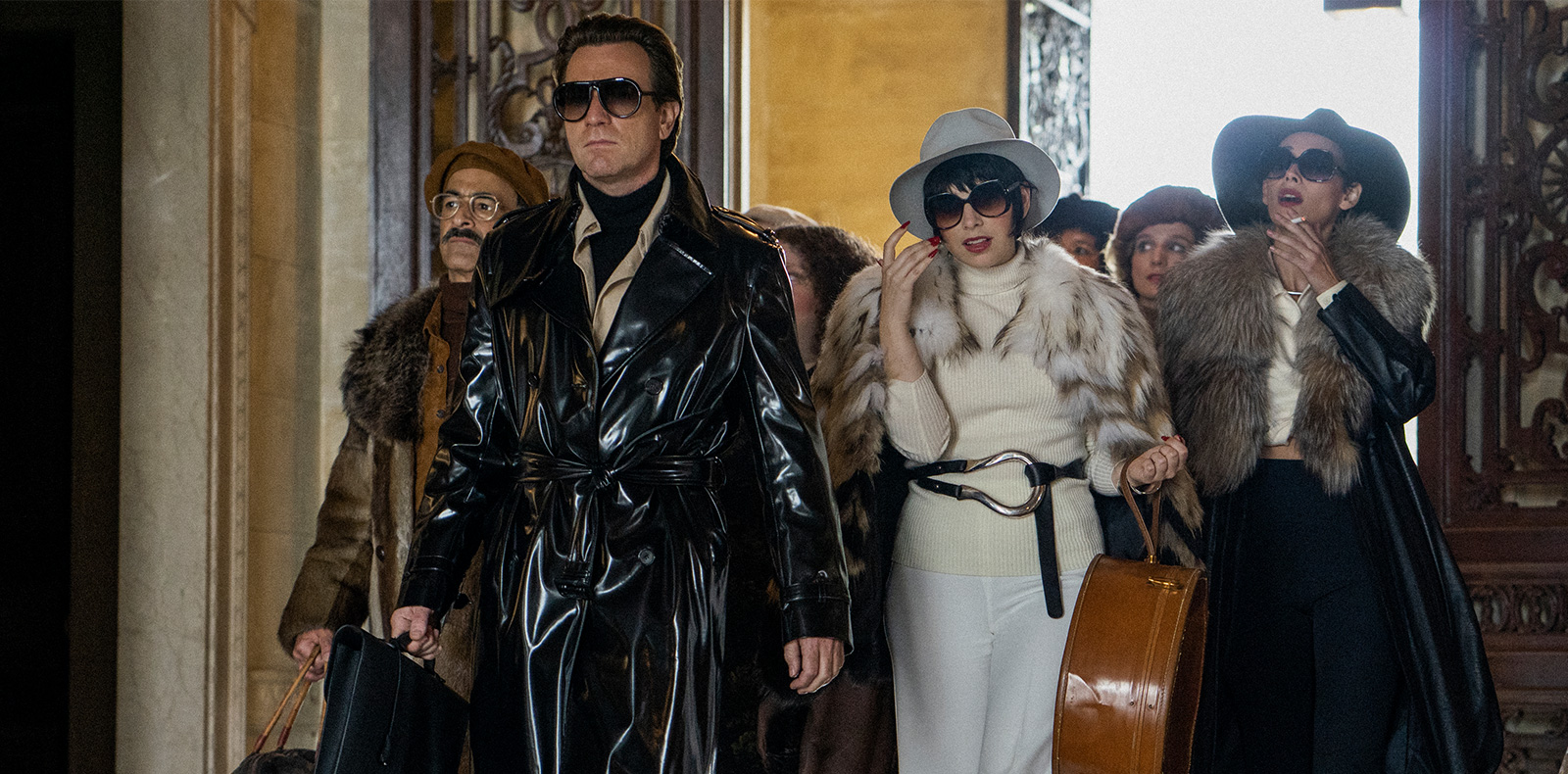
DRESSING HALSTON: IN CONVERSATION WITH JERIANA SAN JUAN Costume designer Jeriana San Juan talks about being a longtime Halston fan, what defined his style, and working with Halston’s personal tailor to recreate his wardrobe.
Were you familiar with Halston’s story and work as a fashion designer when you first got involved with the show?
JERIANA SAN JUAN: Yes, I first connected with the project because I’m such a fan of Halston’s work. In my initial meetings with Dan Minahan, our fearless director, I gushed about my experience studying Halston’s work in fashion design school — pouring over images of his collections in the library at school and looking through archival footage. It was exciting to do something that married my costume design knowledge with my fashion design background.
What about Halston’s work as a fashion designer was so groundbreaking?
SAN JUAN: Halston designed clothing for women to feel string, elegant, and free. There’s an ease, a suaveness to his clothing — and even in his early work as a milliner. He was one of the very first designers to create a brand around his name, and so “Halston » became synonymous with “ease” and “effortlessly sexy” and “effortlessly strong.” But if you look at the architecture and practical building of all those pieces, they’re actually quite complicated. Halston’s work is very much like sculpture; he treated fabrics as his medium and manipulated them like a true artist. He would pleat, wrap, and use textiles in a way that was unconventional and celebrated a woman’s figure instead of creating rigid tailoring that bound it. It was all about ease and softness, and that approach is still influencing fashion today.
What kind of research did you do to prepare for your work on this show, which spans decades and features real people?
SAN JUAN: I really went to the ends of the earth in terms of researching. I wanted to immerse myself in the way the characters would be looking at the world at the time. I researched the designers that Halston was referencing in his work, the culture and art and music that was popular in each time period, what fabrics and styles were emblematic of each era, and of course the real-life people from the show whose lives are all heavily documented. I could replicate a lot from documented events thanks to photographs and articles.
How did you approach dressing Halston in the show?
SAN JUAN: In researching Halston, one of the most incredible things was finding people who had known him personally and who wanted to help this project because they wanted to help their friend. I came to know Halston’s personal style very intimately, and that began when I found a tailor named Gino Balsamo who worked at Halston Limited. He is wonderful and lovely, and was the tailor in the shop assigned to make Halston’s personal clothes. Halston only wore his own designs, and he wanted to wear fabrics that did all the things for him that they did for women; created ease, effortless strength, and effortless beauty. Halston had unique nuances in his clothes — he created these pants with no side seam and specific pocket placements. Gino actually came to my shop and worked with us to create and pattern clothes the same way that he did for Halston.
How did you collaborate with Ewan McGregor on Halston’s costuming?
SAN JUAN: Collaborating with Ewan was one of the highlights of my career. He is just the most
wonderful human being, and an incredible actor and artist. We worked very closely together not just on his costuming, but on the design process. We met all the time throughout production. He would come to the shop just to observe the tailors, or watch me do a fitting, to get a better idea of how a designer works. It was a very unique experience — we worked on how to pin clothes properly, how clothes are constructed and assembled, how to move through a workroom, and I even walked him through where my eyes go when I’m designing so he could better track his eyeline when he’s designing as Halston in the show.
How did you source the key costumes for the show?
SAN JUAN: Most of the pieces in our show on our main characters are created from scratch. I found vintage dealers from every corner of the world, but vintage clothes are often not in fantastic shape, and I wanted to make sure the costumes fit with the same ease and pristine effortless style that defines Halston. There are also many original Halston pieces in the show. Halston’s entire archive was disassembled when he left the company, but I was able to find pieces that were tucked away. Lesley Frowick, Halston’s niece, had gifted a great deal of his work to Lipscomb University. We worked with JS Group International to pull some original pieces. There were also wonderful pieces that vintage collectors loaned me. I worked with a company called Toray International, the original manufacturer of Ultrasuede fabric, and they gave me a ton of Ultrasuede that was the same quality Halston used in his designing. We also worked with Tiffany & Co. to obtain all of the original Elsa Peretti jewelry.
Dressing the costumes for the 1973 Battle of Versailles Fashion Show must have been a huge undertaking. How did you handle it creatively?
SAN JUAN: It was incredibly intimidating. I was able to go into the Conde Nast archives and personally look through all of the archival materials, and I dug into every detail I could find for the other key participating designers — Bill Blass, Stephen Burrows, Anne Klein, Oscar de la Renta — and their work at the time. We couldn’t recreate the entirety of the show, but we created a small, curated collection of the pieces that are considered the most iconic for Halston’s collection, and I created pieces to fill out these collections to help make them cohesive and have a very individual voice for each designer. I found one original Halston piece, a beautiful sequin caftan, that actually walked in Versailles. I used that piece in the show.
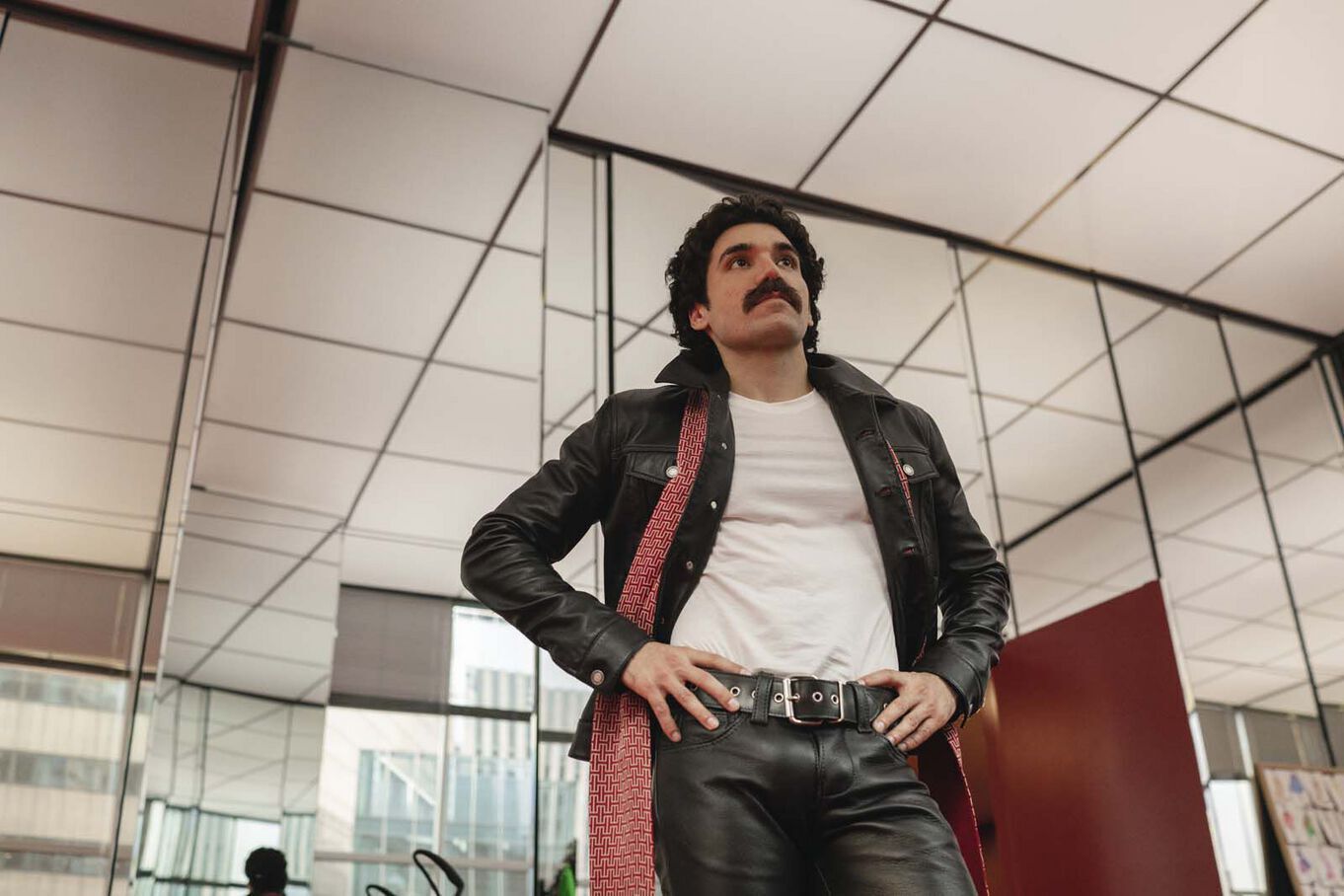
RECREATING HALSTON’S WORLD: IN CONVERSATION WITH MARK RICKER Academy and Emmy Award-nominated production designer Mark Ricker talks about recreating Halston’s world, from crafting Studio 54 to recreating Liza Minnelli’s many awards.
This show spans decades. How did you approach that timeline from a design perspective?
MARK RICKER: One of the reasons I wanted to do the show was because I’d never recreated the ‘70s — the Paul Rudolph Townhouse, Studio 54, the Battle of Versailles, these are iconic settings you really don’t want to screw up. That was a big appeal.
How would you define Halston’s personal style in his key living and work spaces?
RICKER: Halston’s style was rooted in sensibility. The Paul Rudolph Townhouse was an architectural icon of elegance and austerity. His office in Olympic Toward was the ultimate showplace for glamour.
Nobody had seen anything like it. It was a palace floating in the sky with mirrors and severe furniture and views to die for. There’s a minimalism and starkness to those environments that you just can’t fake.
What key scenes were you able to film on location, and what major sets did you have to build?
RICKER: We shot in Bergdorf Goodman and interpreted the hat salon from about ten reference photographs, but everything else we recreated. We built the Olympic Tower almost to scale on a soundstage in Brooklyn — entirely mirrored, floor-to-ceiling windows, red carpets and lacquered furniture, we even built miniatures of the St. Patrick’s Cathedral spires — and rebuilt the interior of the Rudolph Townhouse — the iconic floating staircase, sunken living room and fireplace — in the interior of another space. The Battle of Versailles was filmed at a mansion in Yonkers, New York, and we came up with printed marble designs to put up all over the white walls. We used a 1920s movie theater lobby in Jersey City for the opera house scenes and built a foreshortened version of the stage, but the performances had to take place in a third location. We filmed the Studio 54 scenes at the Hammerstein Ballroom in Midtown, it came the closest to having the same general shape. We built the bar and DJ booth and brought in all the details like the silver sofas. We had a lot of fun — we staged some big well-known events there, like Valentino’s birthday party and Bianca Jagger’s birthday party.
How did you recreate the real-life commercials Halston made?
RICKER: The moment I saw the J.C. Penney ads, that was the Halston I personally remembered. I didn’t know about Studio 54 when I was a kid, but I remembered those ads. We replicated a blue sky backdrop with white clouds, and worked closely with our costume designer Jeriana San Juan on the clothing, and we had them walk toward the camera in the same way. We also replicated the perfume commercial and recreated the bottles.
Are there any fun details or easter eggs fans can keep an eye out?
RICKER: In addition to loaning us Elsa Peretti’s jewelry, Tiffany & Co. loaned us some of her additional work — silver, candlesticks, bowls. She was a genius in her own right and we wanted to showcase her work in the show. Also, you can see memorabilia and photographs in Liza Minnelli’s apartment — the woman has met and partied with everyone — and Krysta looks so much like Liza in this role that I was able to actually use real photos of Liza throughout that room. We also recreated all her awards; Emmy, Oscar, Golden Globe, Tonys, all of them. I wanted to recreate a portrait of Liza for the room, and Krysta worked with our great photographer on a series that were all so good I ended up using three and putting them in white glossy frames that occupied an entire wall in that apartment.
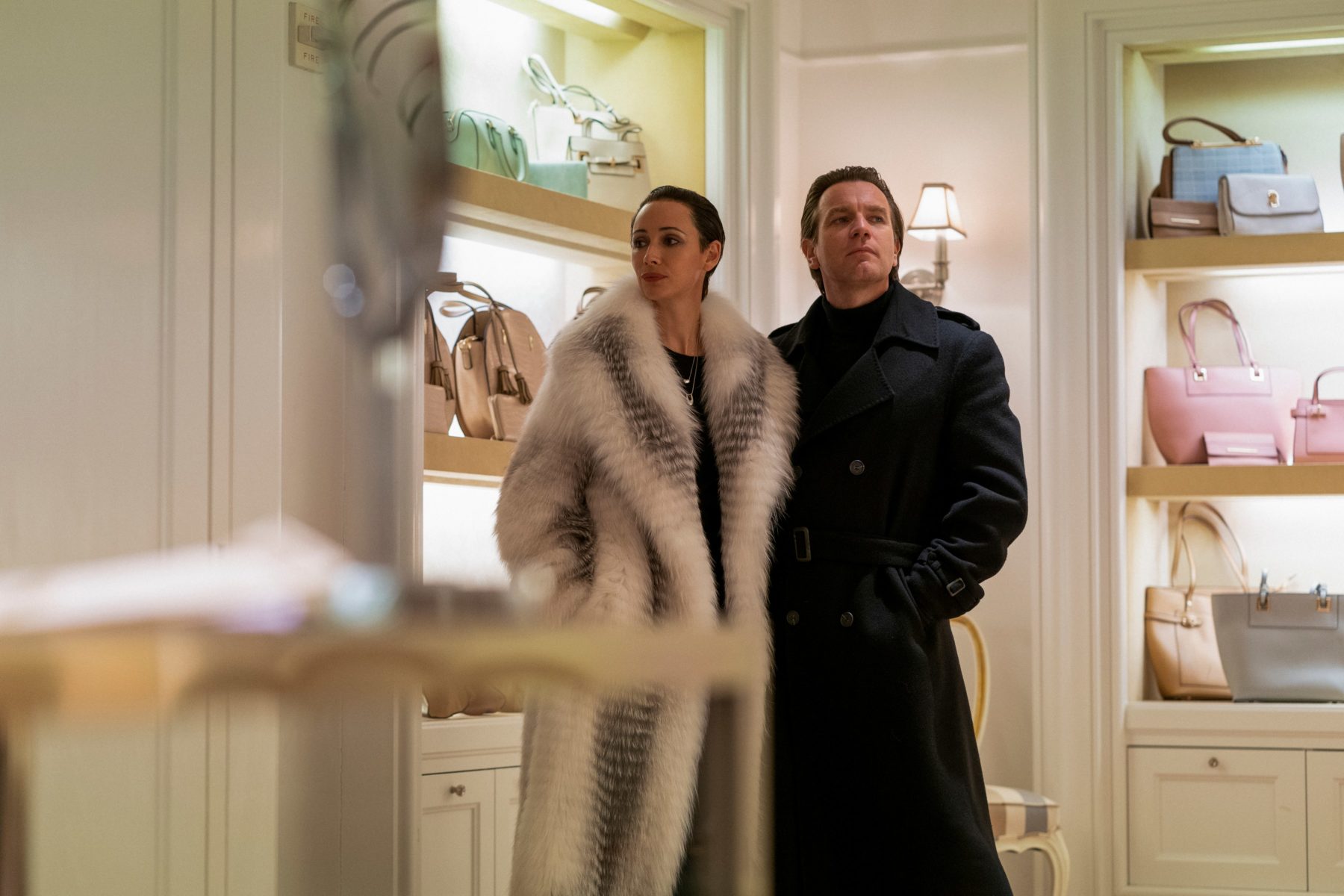
BEHIND-THE-SCENES FACTS ABOUT THE MAKING OF HALSTON
- Ewan McGregor was so committed to the role of Halston that he spent time working with costume designer Jeriana San Juan closely learning her workflow as a designer — from moving through a workroom to mirroring where and how her eyeline moved as she worked.
- McGregor even learned how to actually cut and pin fabrics like Halston. When you see him cutting and pinning clothing in the show, that’s not a double — he’s actually doing all of the work.
- McGregor also did a tutorial with one of Halston’s former favorite models, aka a “Halstonette,” who talked him through Halston’s specific process.
- Prior to filming, McGregor met with Liza Minnelli to ask her questions about Halston before portraying him. It was important to him that she get to weigh in on his portrayal of her best friend.
- Both McGregor and Krysta Rodriguez, who plays Liza Minnelli, worked closely with dialect coach Elizabeth Himelstein to perfect their characters’ distinctive speaking styles.
- To replicate Elsa Peretti’s 1970s look, actor Rebecca Dayan shaved half of her eyebrows to help recreate Peretti’s super skinny eyebrows from the era. Dayan’s natural brows have fully grown back now.
- Like his on-screen character Victor Hugo, Gian Franco Rodriguez is from Venezuela. Rodriguez researched Hugo thoroughly, and even met and interviewed one of Hugo’s real-life friends.
- Costume designer Jeriana San Juan was so committed to recreating the way Halston’s clothing moved, she resewed the hems on the all dresses shown in the Battle of Versaille scenes so that they didn’t look too heavy and moved more freely during filming.
- Krysta Rodriguez relied heavily on interviews to research Liza Minnelli — both interviews Minnelli gave, and interviews people gave about her to see what she was like off-stage in her personal life. “As a performer, it’s hard to be Liza Minnelli on a good day,” Rodriguez said. “But maybe I could be Liza Minnelli on a regular day.”
- Rodriguez never thought she and Minnelli looked alike, but when she went to the audition wearing her fake Liza lashes and signature turtleneck with slicked-back hair, she was shocked by their resemblance.
- Once cast, Rodriguez and the hair and makeup team worked closely to recreate Minnelli’s exact different looks over the years, even carefully building her exact signature eyelash shape. 12. Rodriguez is a long-time Minnelli fan and used to watch her “I Gotcha” performance from LIZA WITH A Z multiple times a day. She got to film the famous number on her last day of filming, and felt it was truly a full-circle moment.
Discover Halston on Netflix.







